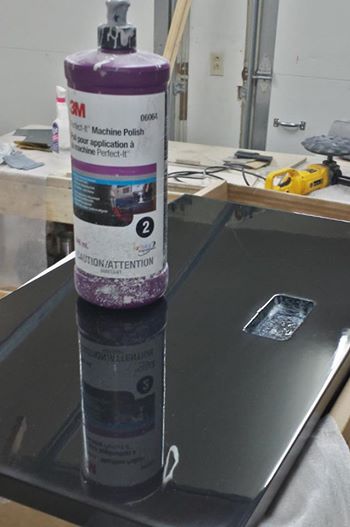Question
We are installing some heavily quilted maple veneer panels on sides and drawer fronts of a custom vanity. They will be nearly natural in color, but we would like to add just a hint of darkening to them. If we want lots of figure to come through, should we use a linseed/tung oil first and then a light coat of dye or vice-versa? The top coating schedule will most likely be a wash coat or two of shellac, scuffed and two-three coats of either Target lacquer or their Hybrid Alkyd top coats.
Forum Responses
(Finishing Forum)
From contributor M:
When finishing figured maple or birch with target I use this schedule.
Target-clear stain base (in lieu of linseed oil). Wipe off and let dry for two hours.
Scuff sand.
Target-clear stain base (in lieu of linseed oil).
Wipe off and allow to oxidize overnight.
Then I generally seal with their WB amber shellac. Sometimes I spray another coat to get a little bit of build from it. However since this is a vanity you may want to avoid using shellac, or if you do use it only as a wash coat. I primarily use EM2000 or 6000 for the most part. I find I generally have to add a bit of retarder 5%-10% by volume. You may also want to experiment with adding a couple of drops of honey amber trans tint at some point. Maple is one of my favorite woods to finish with waterborne since it is really easy to get a solvent look.
The iron salts work by attaching themselves readily to the interlocking grain of the figured areas and darkening them to various degrees depending on the strength of the solution. This darkening is permanent and gives a much more pronounced lighter contrast to the unaffected flat grain as to itself.
Thus, just as in a painting, the darker areas bring the lighter unaffected areas to the front creating more depth or contrast to the two. The dye in turn, no matter how light or dark, adds to the overall affect. This can also be accomplished by adding the dye directly to the sulfate and making it a one-step operation, but make samples first so you know the right combination needed to get you the color you’re looking for ok?
You want the sulfate to do its job but not cause the color to dry to a grey tone, which it will do if too strongly added to the distilled water. I would suggest adding no more than 1/32 of an oz. to 1 gallon of water to start and if when dry, it's showing any objectionable grey to your liking, reduce the mix by half again with additional water ok?
The main thing is plenty of drying after it's applied, chemical stains continue to act upon the wood for days before actually becoming inert. You can also if you have the time, allow the stain to dry and re-sand the entire surface to where the sulfate is then just mainly in the interlocking areas of the wood and re-apply another coat, or even more, as long as you thoroughly dry and re-sand in-between each coat.
With this, and a coat of thin polymerized tung oil, (when I say thinned I mean 10% oil to 90% solvent, pure gum turpentine) and several coats of gloss solvent based finish after the oil dries, both you and your customer will be able to stand back and walk around the piece going “wow”! There are some other things that will even enhance it further, if you care to take the time to do them.
